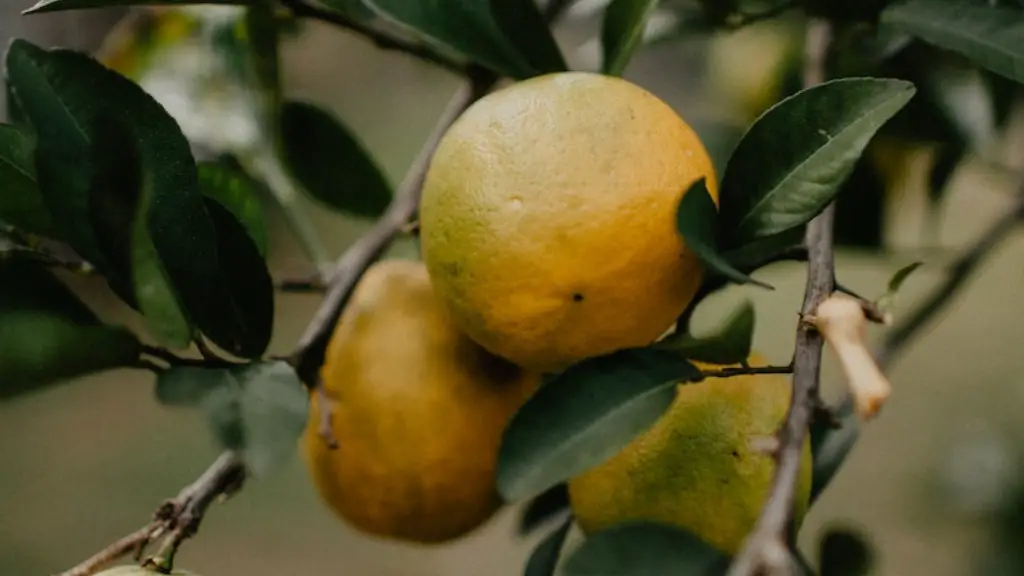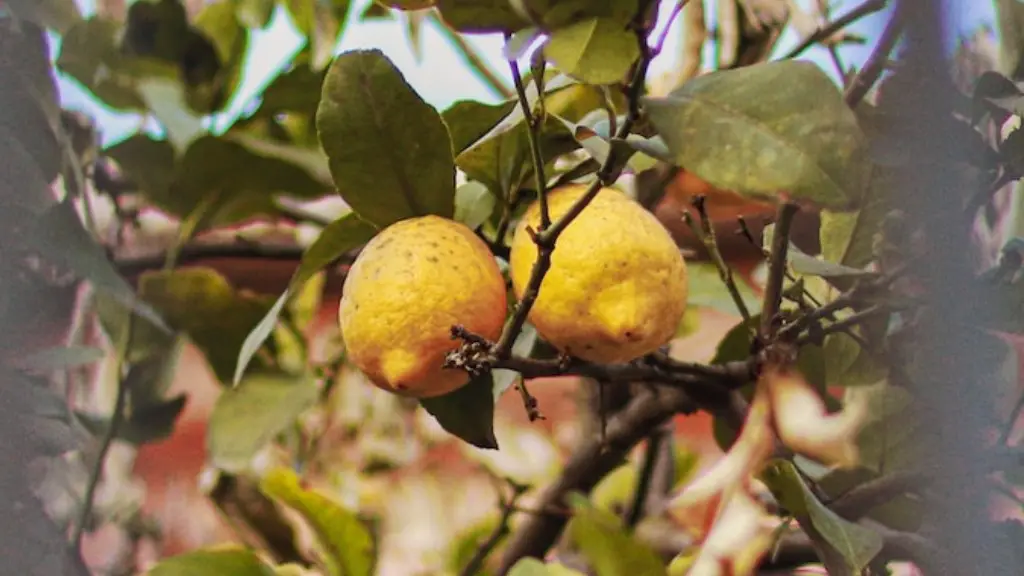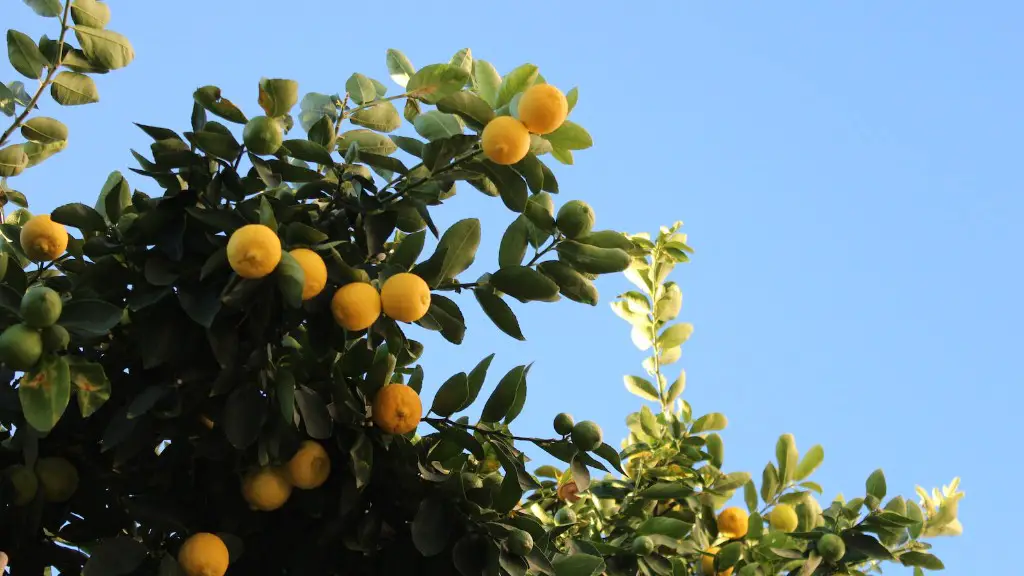Learning how to shape a lemon tree is important for keeping it healthy and yielding abundant lemons. Not only can pruning an overly large tree keep it manageable, but it can also shape the tree and direct its growth. With the right tools, technique, and knowledge, it is possible to transform an overgrown lemon tree into a compact tree with a neat, miniature shape and abundant fruits.
The first step in shaping a lemon tree is to identify the tree’s growth style. Is it upright or sprawling? Is it naturally compact or does it need pruning? Identifying the tree’s natural shape and size will help guide pruning decisions. Additionally, the tree’s age will influence pruning decisions. The younger the tree, the fewer branches need to be pruned.
Next, take a look at the tree’s branches and foliage. Are they thick and numerous? Are they alive, dead, or diseased? If the tree has sparse foliage and dead or diseased branches or leaves, it is important to prune them as soon as possible to prevent further damage. When pruning, avoid cutting all the branches and foliage off the same side of the tree as this can disturb the tree’s natural balance and proportion.
Before starting the pruning process, collect the necessary tools. Hand pruners, loppers, and a hand saw are all necessary for shaping a lemon tree. It is important to sterilize pruning tools before use to prevent transferring disease from one branch to another. When pruning, use sharp tools and make clean cuts. Make sure to wear gloves, safety glasses, and a mask to protect yourself from potential harm.
Once the necessary tools are collected, begin pruning the tree. Start by lightly pruning, removing only the dead, broken, diseased, and overcrowded branches. Next, prune any limbs that are in the way. To encourage lemon production, prune the inside of the tree, removing some of the foliage to allow light and air to reach the interior branches. When finished, clean up the area and dispose of the debris.
Shaping Lemon Trees for Production
When shaping a lemon tree for production, it is important to consider the tree’s growth pattern. Trees that grow in an upright fashion need to be pruned from the top, while sprawlers need to be pruned from the bottom. Additionally, it is important to prune branches that cross over or rub against each other as this can promote disease and weaken the tree. Pruning laterals (side shoots) can also improve fruit production and quality.
Once pruning is complete, it is important to fertilize the tree. Lemon trees benefit from nitrogenous fertilizers as well as micronutrients such as zinc, manganese, and copper. Additionally, pruned trees need extra nutrients to help them recover. The best time to fertilize a lemon tree is in the early spring before new growth begins.
When pruning and fertilizing, it is important to follow established guidelines and practices in order to get the best results. Over-pruning and over-fertilizing can be harmful to the tree, so it is important to be mindful when shaping a lemon tree. Additionally, it is a good idea to check the tree regularly for signs of disease, pests, or other conditions that may need to be addressed.
Training Lemon Trees for Dwarf Results
The pruning and fertilizing methods used to create a dwarf lemon tree are similar to those used to shape a larger tree. When pruning, it is important to take into account the tree’s natural growth habit and prune accordingly. Prune away the dead, diseased, and overcrowded branches, but leave the healthy ones intact in order to keep the tree well balanced. Light pruning and frequent thinning of laterals should be done to prevent an overly large tree.
In addition to pruning, dwarf lemon trees need plenty of supplemental nutrients to stay strong and healthy. Fertilizing with a balanced fertilizer will supply the tree with the necessary macronutrients, while adding micronutrients such as iron, zinc, manganese, and magnesium can help prevent yellowing and leaf drop. Additionally, adding organic matter such as compost and mulch can help promote healthy growth.
When training a lemon tree to become a dwarf, patience is key. Pruning should be done gradually and over time to help the tree adapt to the changes. Additionally, it is important to be mindful of the environment and check for signs of distress such as excessive yellowing or leaf drop. If any of these signs are present, it is a good idea to consult with a professional for further advice.
Protecting the Tree from Disease, Pests, and Weather Extremes
In order to keep a lemon tree healthy, it is important to take proactive steps to protect it from disease, pests, and other potential issues. Regularly inspect the tree for signs of damage or disease and take corrective measures if necessary. Additionally, it is a good idea to apply a fungicide spray to help prevent disease and keep the tree healthy.
It is also important to protect the tree from pests. Horticultural oils and soaps can be used to ward off pests, but if infestation does occur, contact a pest control specialist for advice and treatment. Additionally, avoid using chemical fertilizers or pesticides on the tree as these can be damaging to the tree and soil.
Finally, it is important to take steps to protect the tree from extreme weather conditions such as frost, wind, and heat. When planting a lemon tree, choose a spot that is well-drained and shielded from the wind. Additionally, cover the tree with a blanket or sheet when temperatures drop too low. Once the tree is established, it should be able to withstand most extreme weather conditions, but it is still good practice to be vigilant.
Watering and Mulching to Promote Growth
In addition to pruning, fertilizing, and protecting the tree, it is also important to water and mulch properly in order to promote healthy growth. Lemon trees are drought-tolerant plants, but they still need regular watering and mulching to ensure healthy growth. When watering, make sure to provide the tree with about 1 to 2 inches of water weekly, making sure to soak the entire root zone. Additionally, adding a layer of mulch around the tree will help keep the roots cool and moist.
When mulching, be sure to keep the mulch a few inches away from the trunk of the tree. Additionally, use an organic mulch such as wood chips, shredded bark, coconut coir, or peat moss to help promote good soil health. Mulching is important for keeping the soil temperate and retaining moisture, which will help the tree to thrive.
When it comes to shaping a lemon tree, proper pruning, fertilizing, and protection are key to keeping it healthy and producing an abundance of fruit. Additionally, proper watering and mulching are essential for promoting growth and keeping the tree in peak condition. With the right tools, technique, and knowledge, it is possible to transform an overgrown lemon tree into a compact tree with a neat, miniature shape and abundant fruits.
Tips for Harvesting a Lemon Tree
When it comes to harvesting lemons from a lemon tree, timing is key. It is important to wait until the lemons are fully ripe before picking them, as this will ensure they are as sweet and juicy as possible. Additionally, harvesting the lemons before they are completely ripe will inhibit future production, as the tree will need to use its energy to ripen the remaining lemons.
To determine if the lemon is ripe, gently press the skin. If it gives slightly, the lemon is ripe. Additionally, the skin color should be pale yellow for a sweet variety, or a dark yellow for a sour variety. It is also a good idea to smell the lemon to make sure it has the desired aroma. If the lemon has no aroma, it is not ripe.
When harvesting, always use sharp pruning shears or garden scissors, as pulling the lemons from the tree can often damage the branches. Additionally, make sure you always wear gloves when harvesting. When picking, be sure to choose the lemons that are ripe and leave the ones that are not yet ready to pick.
Once harvested, the lemons can be used in a variety of recipes or can be stored in the refrigerator for up to a week. If storing, place the lemons in an airtight container and make sure they are completely dry before sealing. Additionally, keep the container in the refrigerator to prevent the lemons from becoming overly ripe.
Frequently Asked Questions about Shaping Lemon Trees
When it comes to shaping a lemon tree, there are several frequently asked questions that come up. Here are a few of the most common ones:
Can a lemon tree be shaped into a tree form? Yes, it is possible to shape a lemon tree into a tree form by pruning and training it. It is important to do this gradually and regularly in order to get the desired results.
How often should a lemon tree be pruned? Pruning should be done at least once a year to keep it healthy and prevent overgrowth.
When is the best time to prune a lemon tree? The best time to prune a lemon tree is in the early spring before new growth begins.
How can I protect my lemon tree from disease, pests, and weather? To protect the tree from disease, pests, and extreme weather conditions, it is important to use protective covering and regular inspections. Additionally, applying a fungicide spray and horticultural oils and soaps can help ward off pests.



